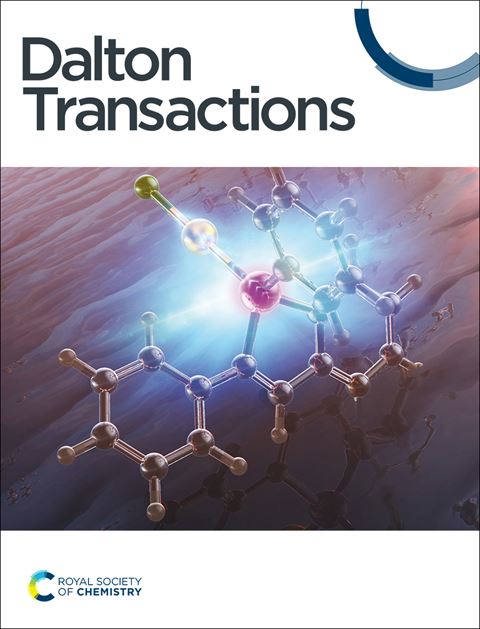CsCl−光催化氧化氮化钛Ti2.85O4N的通量合成
IF 3.5
3区 化学
Q2 CHEMISTRY, INORGANIC & NUCLEAR
引用次数: 0
摘要
熔盐法是制备高性能金属氧化物光催化剂的关键方法,但其在金属氧化物中的应用仍然有限。在这项工作中,我们采用 CsCl 通量法成功合成了氧化钛 Ti2.85O4N,并评估了其光催化性能。我们系统地研究了在不同合成阶段加入 CsCl 的影响。CsCl 的加入大大提高了氧化物的结晶度,减少了缺陷,提高了材料的整体质量。具体而言,在前驱体合成和氧氮化物合成过程中都加入了 CsCl 的 Ti2.85O4N-Cl-Cl 显示出最高的可见光光催化活性。在光催化测试中,在可见光照射下,Ti2.85O4N-Cl-Cl 在 120 分钟内对亚甲蓝的降解率高达 77%,是 Cs0.68Ti1.83O4 前驱体的约 1.97 倍。经测定,Ti2.85O4N-Cl-Cl 的反应速率常数为 0.00899 min-1,这表明电子-空穴分离和可见光利用效率很高。我们的发现为高性能氧化物的合成开辟了一个新方向,凸显了熔盐法在提高金属氧化物光催化性能方面的潜力。本文章由计算机程序翻译,如有差异,请以英文原文为准。
CsCl−Flux Synthesis of Titanium Oxynitride Ti2.85O4N for Photocatalysis
The molten salt method is a key approach for preparing high−performance metal oxide photocatalysts, though its use in metal oxynitrides remains limited. In this work, we successfully synthesized titanium oxynitride Ti2.85O4N using CsCl flux method and evaluated the photocatalytic properties. The impact of CsCl addition at different synthesis stages was systematically studied. The addition of CsCl significantly enhanced the crystallinity of the oxynitrides, reducing defects and improving the overall material quality. Specifically, Ti2.85O4N−Cl−Cl, which incorporated CsCl during both precursor synthesis and oxynitride synthesis, exhibited the highest visible−light photocatalytic activity. In photocatalytic tests, Ti2.85O4N−Cl−Cl demonstrated a remarkable degradation rate of 77% for methylene blue under visible light irradiation within 120 minutes, which is approximately 1.97 times higher than that of the Cs0.68Ti1.83O4 precursor. The reaction rate constant for Ti2.85O4N−Cl−Cl was determined to be 0.00899 min−1, indicating efficient electron-hole separation and utilization of visible light. Our findings open a new direction for high−performance oxynitride synthesis, highlighting the potential of the molten salt method in enhancing the photocatalytic properties of metal oxynitrides.
求助全文
通过发布文献求助,成功后即可免费获取论文全文。
去求助
来源期刊

Dalton Transactions
化学-无机化学与核化学
CiteScore
6.60
自引率
7.50%
发文量
1832
审稿时长
1.5 months
期刊介绍:
Dalton Transactions is a journal for all areas of inorganic chemistry, which encompasses the organometallic, bioinorganic and materials chemistry of the elements, with applications including synthesis, catalysis, energy conversion/storage, electrical devices and medicine. Dalton Transactions welcomes high-quality, original submissions in all of these areas and more, where the advancement of knowledge in inorganic chemistry is significant.
 求助内容:
求助内容: 应助结果提醒方式:
应助结果提醒方式:


